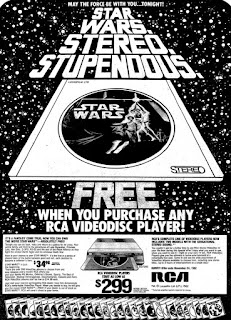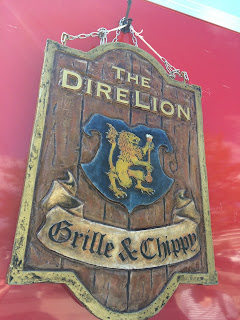As many of you know, I became a "cord cutter" a little over a year ago.
I think the terms "cord cutter" and "cord cutting" are kind of ridiculous descriptions for people who drop cable and satellite television subscriptions.
The reason is that most continue to have hi-speed Internet in their homes, and that means they continue to be dependent on a service provider for a portion of their viewable content.
Nonetheless, that is the lingo used.
WHY CUT THE CORD?
I'm not advocating any particular course of action. If you are happy with your tiered cable or satellite subscription, I'm not going to try and push you away from that.
For some people, the act of cord cutting is about saving money. Others suggest they do it because there "isn't anything good on TV" or they are "too busy to watch TV" or they "stream everything." There is also a segment that seems to do it as an act of "social disobedience."
Whatever the reason, it is a good idea to think it through before you make the jump, and have a playbook ready to go.
JON'S #1 RULE
The most important thing to remember is that it is unrealistic to try and "recreate" an entire cable/satellite channel lineup for "free."
Not realistic.
Furthermore, this blog is NOT going to focus on any illegal file sharing methods for getting all the content available.
That isn't the way I operate, and isn't the way anyone should operate.
I will focus on typical methods and services any household could consider when cord cutting, and try to make it as easy to understand as possible.
THINK DIFFERENT
We've saved $1,200 in the past year on "pay TV" fees -- and have found more affordable ways to enjoy a myriad of content.
I wanted to try it. We found that there were fewer and fewer programs we made a point of watching on cable. We typically recorded network shows, and found ourselves watching more things on the AppleTV unit we purchased in 2013.
Be that as it may, the notion of dropping the cable TV subscription didn't come without some trepidation, or some adjustment.
I'm going to give a brief overview of the methods we use to get programming, and delve deeper into the technology in upcoming blog posts.
HD ANTENNAS
We use digital antennas with our two HDTV sets (antennas haven't changed all that much in the last 40 years).
Digital broadcasts are different than the old analog broadcasts, but they still travel on UHF and VHF (now called Hi-VHF) frequencies.
In the Omaha area (where we live) there are 21 or so digital channels you can receive for free over-the-air. Each of the local affiliates for ABC, NBC, CBS, Fox, CW, and PBS broadcast their main channels in hi-definition, and the signals are beautiful and uncompressed.
In addition, there are digital "sub channels" broadcast alongside the main affiliates. Examples of sub-channels in the Omaha market are MeTV (classic TV shows), Grit (action movies, shows, and westerns), LAFF (older comedy shows and movies), Comet (science fiction shows and movies), and alternate PBS channels like "Create" and "World."
Some markets have more of these channels available, and include networks dedicated to movies, TV shows, game shows, Spanish-language programming, and home shopping.
If you live within a reasonable distance of the broadcast towers, you should be able to pick up your local channels with simple set-top antenna...
...but I will dedicate an entire blog post in the future to antennas, signals, tips, and tricks.
We will also look at the various DVR options available for use with an antenna. Simple digital tuner boxes are available that allow you to do basic recording (with a USB drive) of digital channels (similar to the old VCR days, but with digital files on a drive).
There are also fancier options — like TiVo — that allow multi-channel recording, season passes, a slick program guide, and various streaming services alongside (but it requires various fees for service).
The benefit of using an antenna to get free programming seems self-evident.
I visit with cord cutters who weren't alive back in the day when we all used to use antennas to watch TV.
I've read certain cord cutting blogs where the authors complained about not being able to watch the Super Bowl or the Oscars -- for some reason they had made the decision to forgo a basic antenna in their setup.
STREAMING SERVICES
These days, when people think about cord cutting, they tend to think about the various streaming services and devices available.
As I mentioned earlier, we use an AppleTV unit. There are other options by companies like Roku, Amazon, Microsoft, Sony, and Google. In addition, certain HDTVs are dubbed "smart TVs" and have streaming options (plus wi-fi and Ethernet) built into the set.
You might currently subscribe to offerings like Netflix, Amazon Prime, and Hulu. There exists a myriad of options for streaming content (some free and others not) that are available on these various devices.
There are also services like Sling TV that offer a limited package of channels (including ESPN and HGTV) for $20 a month.
In future posts we will take a look at the various options and try to help simplify the process and assist you with navigating through the choices.
WOULD WE GO BACK?
We have been happy with our decision. As I said at the outset, it took some getting used to, but it was the right decision for us.
Bridget and I are both old enough to remember what it was like when cable television first came to Omaha. We remember the days when three networks and PBS were all we had to watch.
In many respects, it has been fun to travel "back to the future" and employ a combination of old and new strategies to have a rich, vibrant, and unique viewing experience -- an experience is economical, enjoyable, and controllable.
This has become a topic of great interest to me, and fiddling with antennas and trying new streaming services is a fun hobby.
One of my favorite stores in junior high school was Radio Shack, and I have always been fond of gadgets and technology.
I plan to share the knowledge I have accrued the past year, and maybe save you some money along the way...
Read yesterday's blog post: The Puma Principle

































